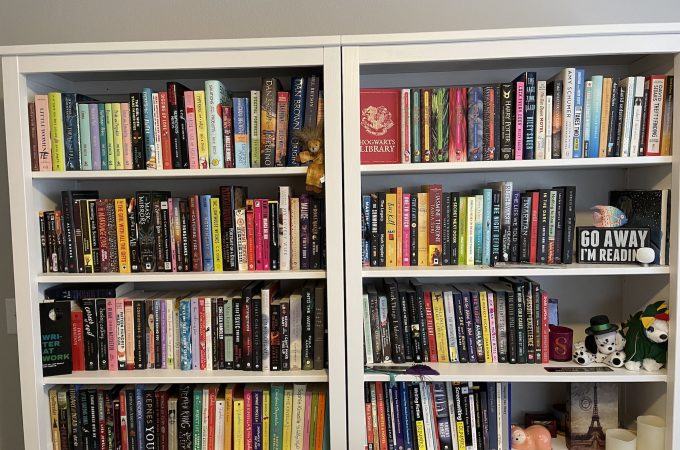
Mastering show, don’t tell in your writing
Show, don’t tell is famous writing advice, but many writers still struggle with using it in their writing. It can be hard to change up your writing style to incorporate showing, especially when you’re writing your first draft and just want to get it all down on paper (so to speak).
So, what is the difference between showing and telling?
Telling states what’s happening, showing illustrates it. Let’s look at some examples:
He was angry.
I was getting tired.
She was tall.
Those are all telling the reader what’s going on, not showing them. Showing means you’re painting a picture the reader can paint in their mind to come to the conclusion that he was angry, the main character is tired, or another character is tall.
“His nostrils flared and his lips pressed into a hard line as his fingernails dug into his skin in his clenched fist. The rough skin around his eyes tightened as he kept his focus on the man in front of him. If looks could kill, his boss would have died on the spot.”
Showing is a golden rule of writing as it helps authors develop their characters, show their motivations in action, and even give depth and realism to their backstory. It provides a sensory experience for the reader and brings them into the story right alongside the cast of characters.
Can you use telling in your story?
Yes! Telling can be used effectively to transition to another action-packed scene instead of spelling out every mundane detail.
It can be a great shortcut when there aren’t that many important or immersive details to share with your readers. Balance out your story with both showing and telling, just know when to give readers the juicy, sensory details and when to skip them.
When to tell:
- Factual
- Brief and to the point
- Efficient way to move the story froward
- Transitions
When to show:
- Slow and detail-oriented
- Pivotal and important action or scene
- Plot heavy
- Focus needs to be on the main character
Tips for showing, not telling in your story

1. Use the five senses
Showing is best done by invoking the five senses: sight, touch, sound, smell, and taste. Describe the setting or action using the five senses to put your reader in the story and help them create a picture of it in their head.
Read through your current work in progress and look for sentences that start with, “I felt,” “I heard,” “she smelled,” or “I saw.” Those words are setting you up to tell what’s happening in the scene instead of showing.
2. Invite the reader into your setting
Use the five senses to describe the story’s setting so readers can imagine it themselves. Instead of explaining that Jane had a hectic day at work, show them!
Jane was already on edge with her deadline looming and the bright lights bouncing off the all-white interior of her graphic design firm were far too cheerful for her irritated mood. The printer hummed continuously in the background as agitated voices bickered down the hallway. Jane inhaled deeply to calm herself but her eyes snapped open when the stink of reheated fish in the microwave hit her nose.
3. Develop the character
From describing them physically to the unique speech patterns and word choices they use, showing and not telling can really develop your story’s characters. Show us their appearance, their body language, and how they behave around other characters.
Dave sauntered into the room in his crisp navy blue suit and surveyed everyone sitting stock-still. The right side of his mouth turned up in amusement as he noted the range of emotions on display. Jeremy tapped his pen against the polished conference table. Amy’s gaze darted toward the noise and her nose scrunched in annoyance.
“Hey, man,” Dave greeted the CEO nonchalantly.
Everyone respectfully called the CEO Mr. Handler, everyone except Dave. Most wondered if he felt he was on the same level as the big boss or if he was simply just that arrogant.
4. Describe the action
Stating what’s going on is the faster way to tell your story, but that’s just it; it’s telling. Show us how the action in the scene unfolded and moved the plot forward.
Erica dropped to ground and completed a flawless somersault to avoid Lily’s roundhouse kick. Sweat was beading on her forehead but she didn’t have time to brush it away as she straightened up in a defensive position. Her quick, shallow breaths were the only sound she could hear as she watched Lily advance. Erica could not be taken hostage. She was their last hope.
5. Bring your reader into the scene, but don’t bog them down with details
Sometimes we tend to go overboard in our stories by trying to show every little thing, and that can ruin the story’s pace or push the reader right out of the story. You don’t need to add an adjective for every noun or share pointless detail.
Too much detail: I wore my new pink tie dye tank top with the thin, twist-tie straps. I’d bought it months ago at this cute little boutique shop in the outlet mall, the one just off the main highway in town that always smells like popcorn no matter where you go. The shirt’s material was a nice soft cotton and the small size fit like a dream, not too low on my hips but not high enough to expose any skin. I knew it would catch Damien’s eye for our second date.
Just enough: I decided to wear my new pink tie dye tank top to my second date with Damien. It’s warm color and soft material were sure to catch his eye and show how excited I was for our get-together.
6. Stop naming emotions
Make the reader experience the emotion with the main character by describing it instead of just naming it. Emotion words include: Happy, frustrated, annoyed, disgusted, anxious, sad, etc. They get the emotion across quickly and we can identify with them, but they’re not the best way to sell the experience the character is having.
Instead of telling the reader that Jane was terrified of the stranger in her house, tell them about her pounding heart, the sound of rushing blood in her ears or how every little sound caused her to hold her breath. Describe her sweaty palms, trembling legs, the hairs standing up on her neck and arms.
What other tips do you have for mastering show, don’t tell in your writing? Share them in the comments below or on Twitter!




